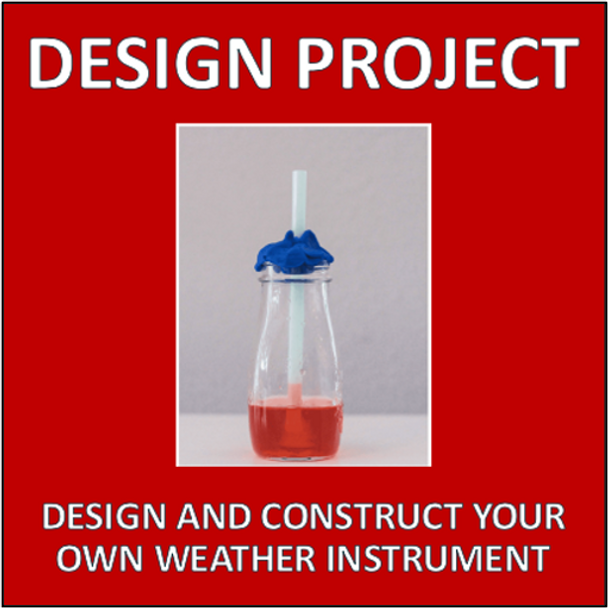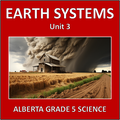Description
Earth Systems is a resource created to align with Unit 3 the Alberta Grade 5 science new curriculum. It’s completely laid out with teacher notes and a sequence of activities, so very little prep is required by the teacher.
This resource includes:
-
Teacher Notes
-
Student Notes
-
Suggested YouTube Videos
-
Investigating Air Pressure
-
Weather Instrument Design Project
-
Local Weather
-
World Climate Jigsaw Activity
-
Climate Detective
-
Extreme Weather Research Activity
-
Animals and Climate Crypto Facts
-
Jeopardy
-
Review Sheet
-
Quiz
-
Answer Keys
The curriculum standards included are:
Organizing Idea: Understandings of the living world, Earth, and space are deepened by investigating natural systems and their interactions.
Guiding Question: How can climate and its effects be understood?
Learning Outcomes: Students analyze climate and connect it to weather conditions and agricultural practices.
Knowledge:
-
Weather is the short-term conditions experienced in a region, including temperature, wind speed and direction, amount of sunlight, precipitation, humidity, and cloud cover.
-
Climate is the long-term weather patterns of a region over a period of at least 30 years.
-
Data in maps, tables, or graphs can be used to represent key characteristics of climate, including temperature, precipitation, humidity, and wind.
-
Climates are dependent on factors that include geographical location, landforms, altitude, and proximity to bodies of water.
-
Climate zones are defined areas with distinct climates and include tropical, dry, temperate, polar, and continental.
-
First Nations, Métis, and Inuit can provide long-term observations of climate for local context.
-
Tools to measure and track weather conditions include thermometers, wind vanes, windsocks, anemometers, barometers, rain or snow gauges, and hygrometers.
-
Websites, weather maps, and weather apps provide access to weather information.
-
First Nations, Métis, and Inuit communities rely on traditional knowledge in addition to modern tools and methods to interpret and predict weather patterns.
-
Methods used to predict weather include computer modelling, historical data, satellite imaging, and First Nations, Métis, and Inuit traditional knowledge.
-
Climate affects various aspects of human activity, including agriculture, infrastructure, clothing, transportation, and recreation.
-
Climate affects various aspects of animal activity, including migration patterns, accessing food, and timing of reproduction.
-
Climate and weather events may influence agricultural practices by affecting components such as crop type, crop production, animal population, soil quality, and water access.
-
Conservation agriculture is a sustainable practice that responds to local climate and weather events.
-
Conservation agriculture practices are adapted to the requirements of plants and animals farmed.
-
Agricultural practices involve monitoring and responding to climate or weather events such as drought, flooding, fires, and windstorms.
-
Conservation agriculture practices include minimizing soil disturbance, maintaining soil cover, using water efficiently, and using sustainable harvesting practices.
-
Sustainable harvesting practices support the maintenance of stable plant or animal populations over time and include crop rotation, companion planting, limiting hunting and trapping, and considering future harvests
-
Observations of weather conditions and animal behaviour can be used to recognize patterns and cycles, such as seasonal migration.
Understanding:
-
The study of climates across regions helps identify historical patterns and make predictions.
-
Climate affects human and other animal activity.
-
Climate and weather events influence agricultural practices.
-
Intergenerational observations and accounts of place enable individuals and communities to recognize patterns and cycles related to weather and seasons.
Skills & Procedures:
-
Distinguish climate from weather.
-
Discuss the characteristics of local, national, and global weather conditions to determine climate.
-
Compare key characteristics of climate zones.
-
Interpret data about climate.
-
Relate factors that contribute to Alberta’s climate.
-
Compare Alberta’s climate to the climates of other Canadian provinces or territories.
-
Examine tools used to measure and track weather conditions.
-
Construct simple tools to measure weather.
-
Observe and record local weather for a given time interval.
-
Represent local weather data.
-
Construct a sample weather map table of a local region for a given time.
-
Explain the importance of weather forecasts.
-
Investigate methods used to predict the weather.
-
Discuss First Nations, Métis, and Inuit methods of predicting weather.
-
Explain how climate can affect human and other animal activity.
-
Describe how climate may affect plants and animals farmed in Alberta.
-
Discuss conservation agriculture practices and potential uses.
-
Describe local climate and weather events that affect agricultural practices.
-
Explain practices related to sustainable harvesting.
-
Examine how weather conditions and animal behaviour can be used to recognize weather patterns and cycles.














